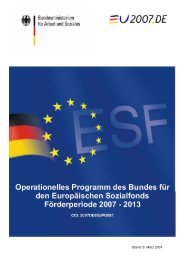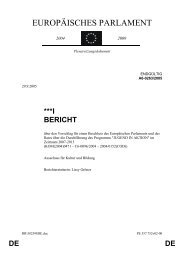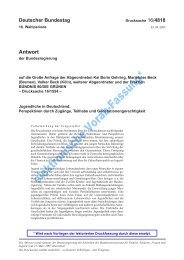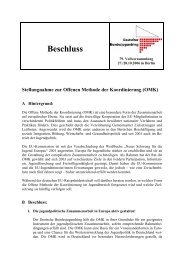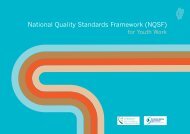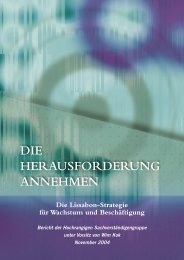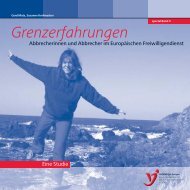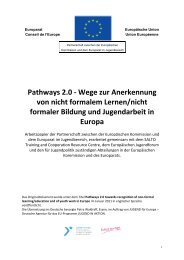Report - Salto
Report - Salto
Report - Salto
Create successful ePaper yourself
Turn your PDF publications into a flip-book with our unique Google optimized e-Paper software.
26<br />
Bridges for Recognition | Sketching the Framework - Offi cial Opening<br />
The European Youth Forum and Recognition ~ Bettina Schwarzmayr<br />
Bettina Schwarzmayr introduced the European Youth Forum and set out to answer 6 questions:<br />
1. Who are we doing this for?<br />
2. Why is the European Youth Forum doing it?<br />
3. Who should recognise non formal education?<br />
4. What is special about non formal education?<br />
5. So what is the problem with it?<br />
6. The solution!<br />
Who are we doing it for? Bettina Schwarzmayr outlined three groups – those wanting<br />
vocational training, those who want a fuller CV for prospective employers and those who might<br />
be marginalised from the formal education system. All three were legitimate but all three need<br />
different tools for recognition.<br />
The Youth Forum is involved because it is convinced of the value of Non Formal Education (NFE)<br />
and is committed to life long and life wide learning. It wants to remove barriers and enable<br />
access to education for all young people and believes that, as young people working with their<br />
peers, it is able to communicate effectively and understand their needs. The Youth Forum is<br />
involved because recognition of NFE is closely linked to active participation in Society and to<br />
the empowerment of the voiceless.<br />
Non-formally gained competencies should be recognised by three groups: Formal education<br />
institutions to aid pathways into the system; the labour market and most importantly; the<br />
individual learner. Again, a variety of methods is required and a system which avoids duplication<br />
of assessment.<br />
The YFJ stresses self recognition because it aids self confidence and enables the learner to describe<br />
their own competencies. This in turn aids assessment of further learning needs. The Council of<br />
Europe’s youth worker and youth leader portfolio approach is an example of this in practice.<br />
Non Formal Education is dynamic, flexible and relational. It involves mutual learning together<br />
with a group and with the educator and is adaptable to the social context of the learners. This is<br />
the beauty of NFE which must be preserved.



